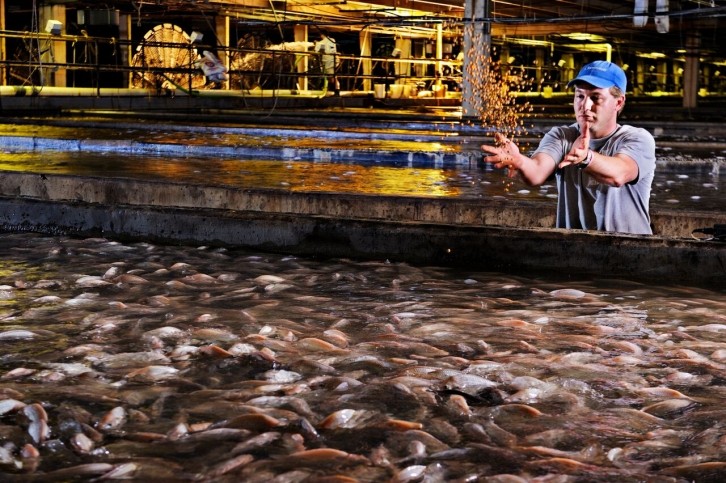Little risk from residue levels of banned fungicide in fish: EFSA

MG, an antimicrobial and dye, has been used globally in aquaculture but is not registered for use in food-producing animals in the EU or the US.
It has been applied as a fungicide in fishmeal, and it has been shown to be present in commercial fish feed (Conti et al., 2015), said the CONTAM panel of the European Food Safety Authority (EFSA) in findings released this week.
And EFSA said residues of MG are regularly discovered in aquaculture products, but mainly those imported from third countries. It said this demonstrates illegal, most likely, use triggered by MG's low cost, high efficacy, large availability and lack of alternatives.
It said a minimum required performance limit (MRPL) has been established for analytical methods used to control the use of MG, being 2 μg/kg for the sum of MG and LMG in meat of aquaculture products.
And that MRPL is used as a reference point for action (RPA) by food control authorities.
But the European Commission had requested EFSA to evaluate whether such an RPA is adequate to protect public health.
RASFF data assessed
The CONTAM panel said it assessed data on occurrence of MG/LMG in food extracted from the EC database on monitoring of veterinary medicinal product residues and other substances in fish, fish products and crustaceans for the years 2002–2014, in which there were 548 targeted samples reported as non-compliant.
Data from Norway for the years 2006–2014 were also considered.
And the EFSA experts also took information from the Rapid Alert System for Food and Feed (RASFF) database for the years 2002–2014, which, they said, threw up 135 notification events reported for MG/LMG.
However, the panel said that data was not suitable for a reliable exposure assessment, and it, thus, calculated hypothetical dietary exposure, considering the RPA as occurrence value for all types of fish, fish products and crustaceans.
It determined that mean dietary exposure across different European dietary surveys and age classes would range from 0.1 to 5.0 ng/kg body weight (bw) per day. For high and frequent fish consumers, the exposure would range from 1.3 to 11.8 ng/kg bw per day.
The Panel, in its assessment, said both MG and LMG may be considered as carcinogenic and as genotoxic in vivo, but concluded that it is unlikely that exposure to food contaminated with MG/LMG at or below the RPA of 2 μg/kg represents a health concern for consumers.
The full opinion can be read here.
Malachite Green Mandate Request by Jane Byrne on Scribd








